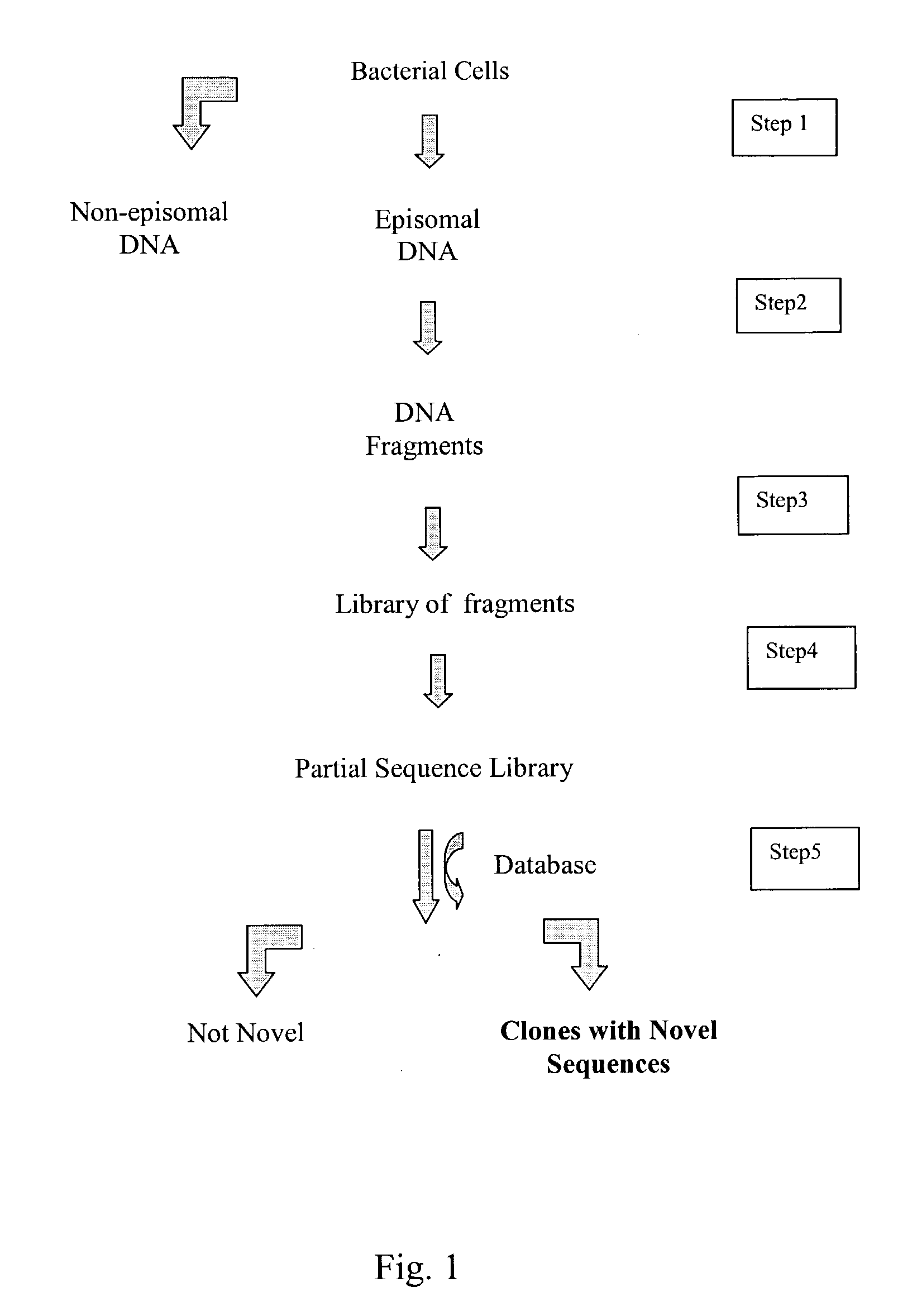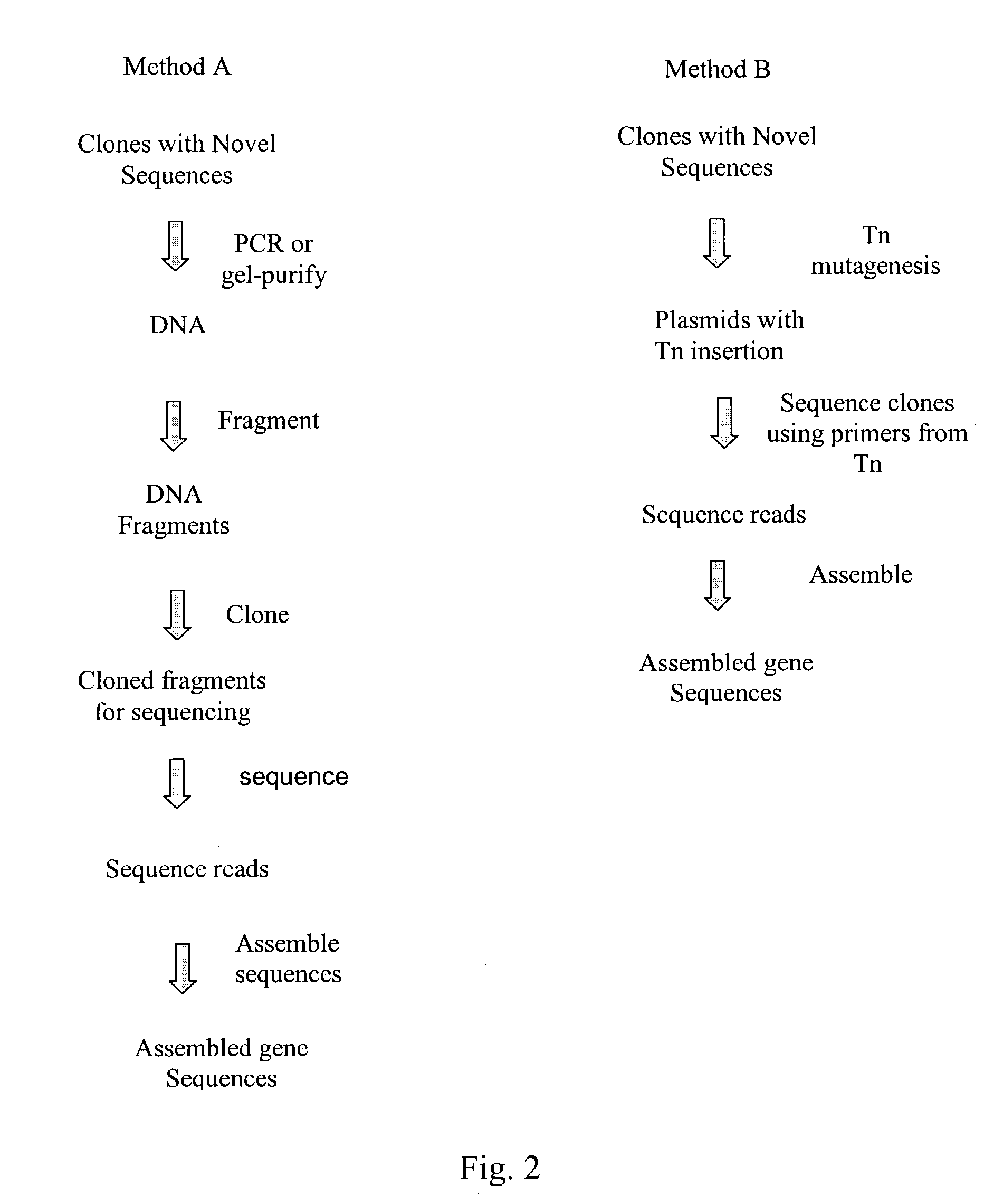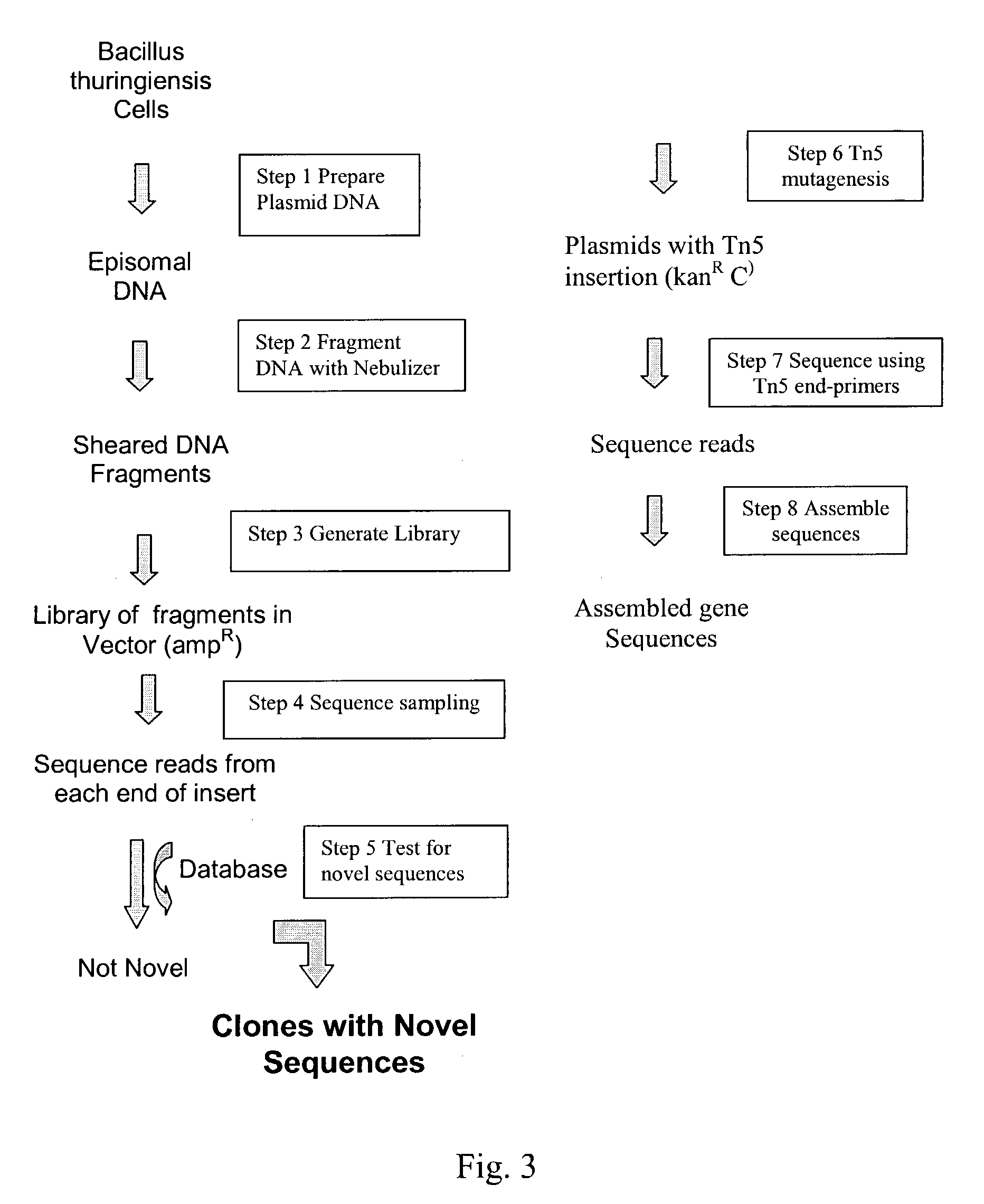Integrated system for high throughput capture of genetic diversity
a genetic diversity and integrated system technology, applied in the field can solve the problems that new genes would be difficult if not impossible to identify by other methods, and achieve the effects of rapid and highly efficient characterization of genetic diversity in organisms, rapid and efficient methods to identify, and rapid sequencing
- Summary
- Abstract
- Description
- Claims
- Application Information
AI Technical Summary
Benefits of technology
Problems solved by technology
Method used
Image
Examples
example 1
Rapid Capture of Diversity From Bacillus Thurineiensis Strains
[0090] The following is an example of how one might practice the invention in the case of a strains or strains where there is likely to be little redundancy with previously known sequences:
[0091] Purification of Episomal DNA From a Bacillus Culture
[0092] To clone and sequence plasmid DNA from a Bacillus strain one first needs to prepare purified plasmid DNA. Ideally, one will purify 100 ug or more of purified plasmid DNA. A starter culture of the Bacillus strain should be grown in 5 ml of LB overnight at 37.degree. C. with aeration. This 5m1 culture is then used to inoculate a 100-250 ml culture which should be grown for 8 hours at 37.degree. C. with aeration. The young cells in this culture will be easier to lyse. The cells can be harvested at 6000 rpm in a Sorval SS34 rotor for 15 minutes. The cell pellet should be resuspended in 20 ml STE (10 mM Tris p118, 0.1M NaCl, 1 mM EDTA pH8) to remove all media and then centrifu...
example 2
Capture of Episomal Diversity From Environmental Samples
[0102] In this example, one isolates plasmid DNA from a soil, water, or other type of environmental sample, and then generates and screens libraries by end sequencing to identify novel DNA regions. One may sequence either one or both ends of the resulting clones.
[0103] Plasmid DNA from soil for example is isolated by the procedure listed above, and further purified by Cesium chloride centrifugation. Purified plasmid DNA is fragmented, and 10-20 kb fragments as well as other size fragments (1-3 kb, 3-10 kb and 10-25 kb) are isolated by agarose gel electrophoresis. Alternatively, one may use vectors that do not require gel purification of fragments to achieve size selection. Purified fragments are ligated to a vector or vectors of choice, and the resulting mixture transferred into E. coli. Individual colonies are picked, and DNA prepared for sequencing as above. Resulting sequence is tested for novelty against a database, and nov...
example 3
[0104] Algorithms are useful to sort data, and to manage large amounts of information. One possible algorithm that may be used to identify clones for further sequencing is described here. This type of algorithm can be particularly useful in cases where one has generated a large dataset of existing sequences (such as bacterial plasmid sequences), and wishes to sequence only clones that do not have identify or high similarity to members of the database.
[0105] Algorithm
[0106] 1. Assign a label to each clone
[0107] 2. Send sequences to pool `A`
[0108] 3. Pre-blast sequences in pool `A` to remove / mask sequences that are repetitive in nature. (e.g. transposon sequences or vector sequences.) Send these sequences to pool `B`
[0109] 4. Blast search of n number sequences in pool `B`
[0110] 5. Place sequences in pools based on results of blast search of pool `B`
[0111] a. Ife>10-1, then send to pool `Failblast`
[0112] b. If
[0113] c. Of Clones in...
PUM
| Property | Measurement | Unit |
|---|---|---|
| pH | aaaaa | aaaaa |
| volume | aaaaa | aaaaa |
| pressure | aaaaa | aaaaa |
Abstract
Description
Claims
Application Information
 Login to View More
Login to View More - R&D
- Intellectual Property
- Life Sciences
- Materials
- Tech Scout
- Unparalleled Data Quality
- Higher Quality Content
- 60% Fewer Hallucinations
Browse by: Latest US Patents, China's latest patents, Technical Efficacy Thesaurus, Application Domain, Technology Topic, Popular Technical Reports.
© 2025 PatSnap. All rights reserved.Legal|Privacy policy|Modern Slavery Act Transparency Statement|Sitemap|About US| Contact US: help@patsnap.com



